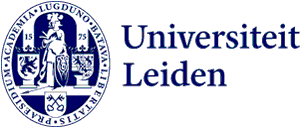
Our perspective on history is changing and our museums are changing too
Museums have long focused on power, wealth and a few famous figures. But that is changing, says Valika Smeulders, head of the history department at the Rijksmuseum. What this change comprises and how it has come about is the subject of her keynote speech at the D&I Symposium on 11 January.
What were museums like before and what is changing now?
‘Dutch museums were created in the 19th century to showcase our national history. For long, the focus was on monumentality and a limited number of central figures. But now it is time to look at our history from different perspectives and create a much more varied picture of that history. To talk about not only economic success or leaders but also ordinary people who provided labour or rose against the government. And to stop looking only at men but at women too. And not to look isolation at what was going on in the Netherlands but to look at this in conjunction with what was happening in colonised territory.’
How is the Rijksmuseum’s focus changing?
‘We want to show that multiple realities coexisted in history. In our 2021 exhibition on slavery, for example, we told ten personal stories: about, for instance, people who were enslaved, owned enslaved people or opposed slavery. Then you approach history from different angles.’

What is the significance of an exhibition like that at the Rijksmuseum?
‘Museums have always attracted a select audience: often somewhat older people from a European background who are university educated. That audience was used to the stories of power and wealth. By highlighting history more broadly, this exhibition also appealed to visitors with roots in the colonised areas.
‘The exhibition focused on personal stories within the larger colonial system. What I was glad to see was how visitors reflected on this and applied it to the present. You saw them start to think about their role in social issues. What would we do if we saw slavery and disagreed with it?’
Do you think it’s the job of museums to get people thinking?
‘Yes, it’s what we aim to do. History used to be seen as a discipline at universities or museums. But in the past 20 years history has frequently made the news and been discussed on social media. People are really thinking about their position in society and how stems from our past. And that debate can be quite fierce at times. We at the Rijksmuseum want to contribute with new research and insights.’
D&I Symposium: Untold Stories: Representation, Heritage and Museums
This year’s D&I symposium (Diversity & Inclusion) on 11 January is about museums and heritage institutions’ role in shaping stories about our past and present. The symposium will also give us the chance to reflect together on the milestones of the past ten years.
At the university we also have questions about how we as an institution can study and discuss the history and interests of wider society, how we can be relevant to students from diverse backgrounds and how we can help reflect on social issues.
The symposium consists of a plenary programme and various workshops. See the programme and sign up.
Text: Dagmar Aarts
Photo: Visitors at the Rijksmuseum’s slavery exhibition. Credit: Rijksmuseum
